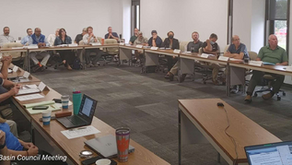Three Things Project Managers Should Know About Managing the Boss
- JD Solomon
- Apr 4, 2024
- 3 min read

The story is a constant one. I saw it again just last week on a big program. In that case, one of the project managers saw an incident as something major and made it a big deal through a couple of emails and then as the primary subject of the meeting. Unfortunately, the program manager and the executive sponsors did not see it the same way. The project manager is now in purgatory, not the offending consultant and contractor. Project managers should know these three things about the big stuff and the small stuff.
#1 Most Decisions Are Tactical
Most decisions are similar to the hundreds we make every day to live our lives safely. Your boss, especially your boss's boss, wants their project managers to make these decisions without much fanfare.
If I walk outside and see a tiger, my simple response is to run. It is a simple rule of thumb that ensures my survival. It may not be an accurate or appropriate response – after all, the tiger may be a tame tiger, an old toothless tiger, or even a tiger chained to a tree. Nevertheless, I behave to avoid the hazard and ensure my survival.
Another type of tiger is Aubie, Auburn University's mascot. When I see Aubie, I yell 'War Eagle' and give him a high five. This may not be any more accurate or logical than running from a live tiger. After all, the person in the mascot suit may be a person intending to do me harm. As a rule of thumb, the odds of a negative outcome are remote, so I yell 'War Eagle' and give him a high five anyway.
#2 Big "Strategic" Decisions Take Time
Big decisions are relatively few. They take months or years to make and are categorized. Data analysis and statistical thinking are typically needed to make really good, big decisions. Big decisions require teams and layers of management because their resolution must be thoughtful and measured.
#3 Get on the Same Page
One of the greatest dangers for project managers is mistakenly considering a decision to be one type and the boss or boss’s boss considering it to be the other type.
In practice, I see the mistake as common in one direction as the other. In other words, I see many project managers blow through decisions they consider to be small ones when, in fact, their superiors saw the same decision as a game changer. On the other hand, I see many project managers allocate time, resources, and credibility to decisions that their bosses consider to be day-to-day, tactical decisions.
How to Separate the Big Stuff from the Small Stuff
The short answer is to get aligned with senior management. That is often easier said than done. These are a few ways:
Charter (and re-charter) your projects regularly. Constantly update key success factors and key decisions.
Establish weekly communication summaries.
Provide the opportunity for senior management to participate in milestone reviews.
Constantly segregate issues into tactical and strategic ones. Work the problem accordingly. Avoid drama.
Effectively communicate. The most complex issues need to be communicated in less than three minutes (or about 300 words).
Three Things Project Managers Should Know
Remember that there are tactical decisions, strategic decisions, and differences of opinion on the big stuff and the small stuff. The perception of the boss, especially the boss's boss, matters most. Spend less time acting independently or convincing superiors to see it your way. Spend your valuable time as a project manager getting in alignment and staying there.
JD Solomon Inc. provides solutions for program development, asset management, and facilitation at the nexus of facilities, infrastructure, and the environment. Subscribe for monthly updates related to our firm.




Kommentare